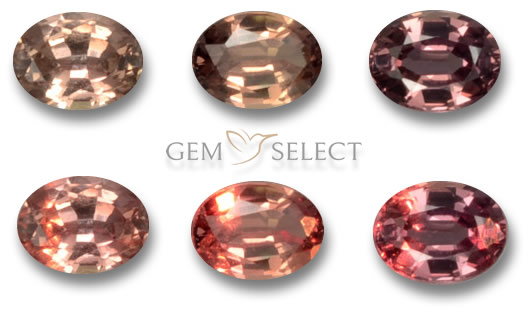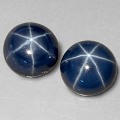Color Change Sapphire Gemstone Information

About Color Change Sapphire - History and Introduction
Color change sapphire stands out as an exceptionally rare variety of corundum, famous for its fascinating shift in color under different lights. While blue tends to be the go-to shade, these gems can also show up in greenish, yellowish, pinkish, or violet-purple tones, all thanks to the specific elements mixed in. Usually, they go from blue in daylight to a violet-purple under incandescent bulbs. The best ones deliver a bold, eye-catching change, though many just nudge from blue to a bluish-purple. If you're hunting for one, check out our range of color change sapphire available now.
To really get the full effect of color change sapphire, take a look at it in various settings - like morning sun, afternoon light, fluorescent bulbs, or warm incandescent glow. This rare trait happens because these sapphires have two ways to let light through, not just one. Think about it: a red stone looks red by soaking up everything but red light. But if a gem absorbs all but blue and red, it'll appear blue in blue-rich light and red in red-rich conditions. Fluorescent light packs more blue, incandescent more red, and natural daylight keeps things balanced, making it ideal for spotting the shift.

Identifying Color Change Sapphire
As a form of corundum, color change sapphire ranks as the second hardest mineral after diamond. This impressive hardness makes it pretty easy to spot, even though other gems might mimic its color or shine. Like other sapphires, it has a specific gravity of 4.00, a refractive index between 1.76 and 1.78, and a birefringence of 0.008. It forms in the trigonal crystal system with three symmetry planes and four axes, varying by type and source. There's no true cleavage, but fractures can be conchoidal or uneven.
Color Change Sapphire Origin and Gemstone Sources
Color change sapphire comes from mines across the globe, such as Thailand, Sri Lanka (once called Ceylon), Cambodia, Tanzania, Nigeria, Kenya, Madagascar, Australia, China, and the USA. Today, Sri Lanka and Madagascar lead in producing top-notch sapphire.
The most prized sources include Kashmir in India, Pailin in Cambodia, Burma (Myanmar), and Sri Lanka, known for their superior quality.
Buying Color Change Sapphire and Determining Color Change Sapphire Gemstone Value
Color Change Sapphire Color
This gem shifts hues depending on the light source. The classic change is from blue in daylight to bluish-purple under incandescent light, but other combos exist too. Blue comes from iron and titanium, violet from vanadium, yellowish or greenish from iron alone, pink from chromium, and orange from iron plus vanadium.
Color Change Sapphire Clarity and Luster
Unlike rubies, color change sapphires often boast great transparency with minimal inclusions, making many eye-clean. They're usually small, but larger ones can still be clear. Once polished, they show that signature vitreous luster all sapphires have.
Color Change Sapphire Cut and Shape
Faceting brings out the color shift best, so you'll see ovals, rounds, and cushions most often - they match the rough's natural form. Cabochons aren't common here since facets amp up the effect.
Color Change Sapphire Treatment
Heating is standard for most sapphires, reaching 1700 to 1800 degrees Celsius before cutting. Color change types rarely get diffused or filled, but it happens. Untreated ones are super rare but do exist - pretty exciting if you find one!
Color Change Sapphire Gemological Properties
| Chemical Formula: | Al2O3 - Aluminum oxide |
| Crystal Structure: | Trigonal, doubly pointy, barrel, hexagonal pyramid and tabloid shape |
| Color: | Various blue tones, colorless, pink, orange, yellow, green, purple, black |
| Hardness: | 9 on the Mohs scale |
| Refractive Index: | 1.762 to 1.788 |
| Density: | 3.95 to 4.03 |
| Cleavage: | None |
| Transparency: | Transparent, translucent, opaque |
| Double Refraction or Birefringence: | -0.008 |
| Luster: | Vitreous |
| Fluorescence: | Blue sapphire: None; colorless sapphire: Orange-yellow, violet |
Please refer to our Gemstone Glossary for details of gemology-related terms.
Color Change Sapphire: Varieties or Similar Gemstones

Color change sapphire is a rare gem-quality aluminum oxide. 'Sapphire' covers any corundum color except red - that's ruby. Found worldwide in many hues, it can be confused with zircon, spinel, tourmaline, topaz, or diamond. But its Mohs hardness of 9 sets it apart easily.
Most Popular Similar or Related Gemstone Trade Names:
Red ruby, blue sapphire, star sapphire, star ruby, yellow sapphire, golden sapphire, orange sapphire, green sapphire, white sapphire, pink sapphire, and purple sapphire rank among the favorites.
Lesser-Known Similar or Related Gemstone Trade Names:
Padparadscha sapphire, Ceylon sapphire, Kashmir sapphire, cornflower blue sapphire, Pailin sapphire, and black sapphire are some less common ones.
Color Change Sapphire Gemstone Mythology, Metaphysical and Healing Powers
Sapphire symbolizes wisdom and calm. Color change sapphire can ease mental stress and lift spirits - handy for meditation by quieting thoughts. For ages, sapphires have stood for the sky, purity, and honesty. With its color range, it ties to multiple chakras. It suits zodiac signs like Taurus, Virgo, Libra, Sagittarius, or Gemini, links to water, and aligns with Saturn.
Historically, sapphire meant truth, loyalty, and trust. Wearing it was thought to bring peace, happiness, and insight. It served as a strong amulet for explorers, said to protect even after passing to new owners.
Abbess Hildegard von Bingen (1098-1179) wrote about gems in 'Physica,' seeing them born from water and fire with divine gifts. On sapphire: "Who is dull and would like to be clever, should, in a sober state, frequently lick with the tongue on a sapphire, because the gemstone's warmth and power, combined with the saliva's moisture, will expel the harmful juices that affect the intellect. Thus, the man will attain a good intellect."
Color Change Sapphire Gemstone and Jewelry Design Ideas
Thanks to its toughness, color change sapphire works for any jewelry, especially rings. It shines brightest in daylight or fluorescent light over incandescent. Lighter shades sparkle more, while deeper ones wow with saturation. Given its scarcity and cost, it's often for luxury pieces rather than everyday wear.
As one of the 'precious four' - with ruby, emerald, and diamond - sapphire shows up in stores everywhere. From ornate pins and necklaces to simple studs, it's a staple in designs both timeless and trendy.
: Note: Buy colored gemstones by size and not by carat weight. Colored stones vary in size-to-weight ratio. Some stones are larger and others are smaller than diamond by weight in comparison.
Color Change Sapphire Gemstone and Jewelry Care and Cleaning

A soft cloth or brush with warm soapy water does wonders for color change sapphire. Rinse thoroughly to ditch any soap. Extreme heat can alter its hue, so steer clear of temperature shocks. Avoid bleach or acids like hydrofluoric - they can eat away at it.
It's sturdy, but take off jewelry for heavy activities like sports to avoid damage. When removing, hold the setting, not the stone, to keep prongs strong. Store wrapped in soft fabric or in a lined box for safety.
Frequently Asked Questions
What is color change sapphire?
Color change sapphire is a rare corundum gem that shifts colors under different lighting, often from blue to violet-purple.
How does color change sapphire shift colors?
It happens due to two light transmission paths, absorbing wavelengths differently based on the light source's composition.
Where does color change sapphire come from?
It's mined in places like Sri Lanka, Madagascar, Thailand, Tanzania, and others, with Sri Lanka and Madagascar as top sources.
Is color change sapphire usually treated?
Most sapphires are heated, but untreated color change sapphires exist and are highly valued for their natural state.
How hard is color change sapphire?
It scores 9 on the Mohs scale, making it extremely durable and second only to diamond.
What colors can color change sapphire appear in?
Beyond blue, it can show greenish, yellowish, pinkish, or violet-purple, depending on trace elements.

